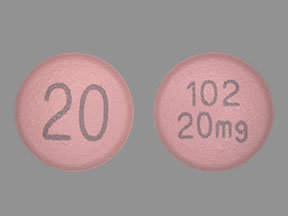Lonsurf Disease Interactions
There are 4 disease interactions with Lonsurf (tipiracil / trifluridine).
Tipiracil (applies to Lonsurf) end stage renal disease
Moderate Potential Hazard, Moderate plausibility. Applicable conditions: hemodialysis
The pharmacokinetics of tipiracil have not been studied in patients with end stage renal disease.
Trifluridine and tipiracil (applies to Lonsurf) hepatic impairment
Moderate Potential Hazard, Moderate plausibility. Applicable conditions: Liver Disease
No adjustment to the starting dosage of products containing the combination ingredients, trifluridine and tipiracil is recommended for patients with mild hepatic impairment. No clinically important differences in the mean exposures of trifluridine and tipiracil were observed between patients with mild hepatic impairment to moderate hepatic impairment and patients with normal hepatic function. Caution is recommended when using these agents in patients with severe hepatic impairment as their pharmacokinetics have not been studied in these patients. Do not initiate in patients with baseline moderate or severe (total bilirubin >1.5 times ULN and any AST) hepatic impairment.
Trifluridine and tipiracil (applies to Lonsurf) myelosuppression
Moderate Potential Hazard, Moderate plausibility. Applicable conditions: Bone Marrow Depression/Low Blood Counts
The use of products containing the combination ingredients, trifluridine and tipiracil may cause severe myelosuppression (Grade 3-4). It is recommended to monitor for signs and symptoms suspected of myelosuppression such as anemia, neutropenia, thrombocytopenia, and febrile neutropenia. Obtain complete blood counts prior to and on Day 15 of each cycle of the combination product containing trifluridine and tipiracil and more frequently as clinically indicated. Withhold the use of the agent for severe myelosuppression and resume at the next lower dosage according to the manufacturer instructions.
Trifluridine and tipiracil (applies to Lonsurf) renal dysfunction
Moderate Potential Hazard, Moderate plausibility.
No adjustment to the starting dosage of products containing the combination ingredients, trifluridine and tipiracil is recommended for patients with mild or moderate renal impairment. The estimated mean AUC of trifluridine at steady state was 31% higher in patients with mild renal impairment and 43% higher in patients with moderate renal impairment than that in patient with normal renal function. The estimated mean AUC of tipiracil was 34% higher in patients with mild renal impairment and 65% higher in patients with moderate renal impairment than that in patients with normal renal function. Caution is recommended when using these agents in patient with severe renal impairment or end-stage renal disease as their pharmacokinetics have not been studied in these patients.
Switch to professional interaction data
Lonsurf drug interactions
There are 222 drug interactions with Lonsurf (tipiracil / trifluridine).
Lonsurf alcohol/food interactions
There is 1 alcohol/food interaction with Lonsurf (tipiracil / trifluridine).
More about Lonsurf (tipiracil / trifluridine)
- Lonsurf consumer information
- Check interactions
- Compare alternatives
- Pricing & coupons
- Drug images
- Side effects
- Dosage information
- During pregnancy
- Generic availability
- FDA approval history
- Drug class: antineoplastic combinations
- En español
Related treatment guides
Drug Interaction Classification
| Highly clinically significant. Avoid combinations; the risk of the interaction outweighs the benefit. | |
| Moderately clinically significant. Usually avoid combinations; use it only under special circumstances. | |
| Minimally clinically significant. Minimize risk; assess risk and consider an alternative drug, take steps to circumvent the interaction risk and/or institute a monitoring plan. | |
| No interaction information available. |
See also:
Further information
Always consult your healthcare provider to ensure the information displayed on this page applies to your personal circumstances.


